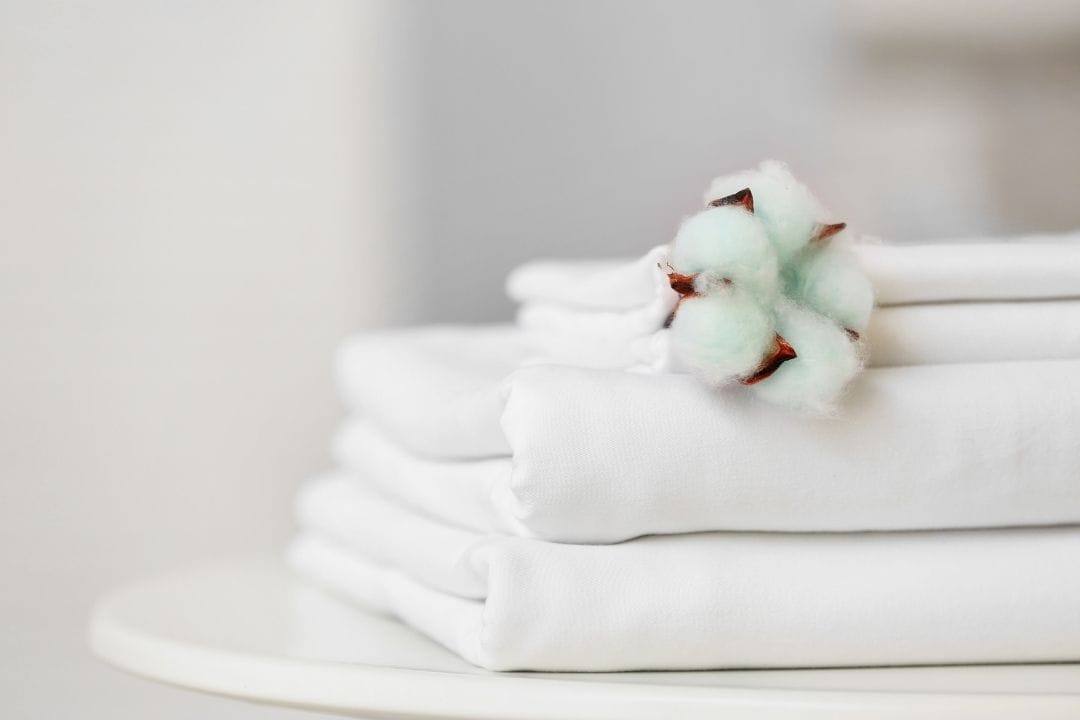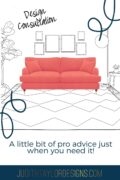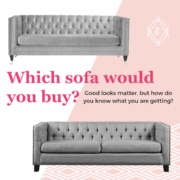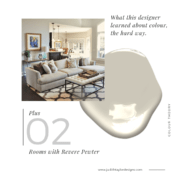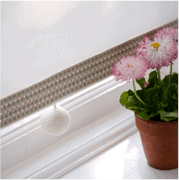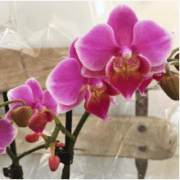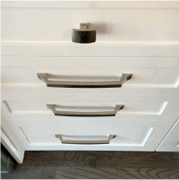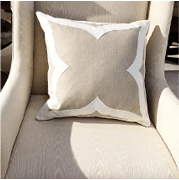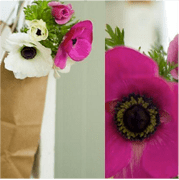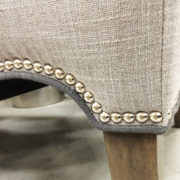As many invest their money on a good quality mattress, fewer people think about the quality of their bed sheets. Sleeping on great sheets is just as important. There are many things to take into consideration before you buy. When in search of the right bed sheets, arm yourself with information about fibre content and, material construction, thread count, and how to care for the product.
Material & Fibre Content
An average person spends at least one-third of their life in bed. Having a good mattress, duvet and pillows may not be as yummy as they might when paired with the wrong sheets. This makes investing in quality bed sheets the key to comfort when it comes to getting a good night’s sleep.
There are many varieties of bedsheets to choose from. This includes looking at material, weave and thread count. As this may be overwhelming, let’s check out examples of materials and fibre content to consider when on a mission to find the right bedsheets.
The first decision to make is what material do you prefer for a cozy night. We’ve provided a breakdown of common bed sheet materials and their pros and cons. This will definitely make the process of choosing easier while figuring out what will fit your needs.
Fibres
Cotton

The most popular choice for bed sheets, cotton has been used for many many years and is made from the fluffy fibre that comes from the cotton plant.
Pros: Durable and strong. Also holds up well with frequent washing. It maintains a comfortable body temperature. A bonus feature, cotton is hypoallergenic.
Cons: Cotton is heavily produced so quality can vary. Many bed sheets that are labeled as 100% cotton may feel cheap, uncomfortable or scratchy due to low thread count or poor construction, depending where it is coming from or who is farming it. How it is manufactured will make a big difference too. At best, it can feel silky and luxurious, but you certainly get what you pay for. When buying cotton products, it is helpful to do some research before making the final decision to purchase. Egyptian cotton, for example, known for it’s long fine fibres is thought to be the most luxurious. But when buying Egyptian cotton, it is important to know to read the labels and look for long-staple pima, long-staple Egyptian, or Supima cotton. Otherwise, you may just get cotton that happens to be farmed in Egypt!

Linen
A less common fibre for sheets, linen is also a luxurious choice. Linen sheets are bed sheets that are woven from fibres from the flax plant.
Pros: Thicker than cotton making them more durable and strong; they last longer than most fabrics. They are breathable and absorb moisture. Linen can help you stay cool during the hot summers and stay warm during the winter.
Cons: Has a lower thread count compared to other materials. Linen with less than 200 thread counts is not common. More typically, linen is measured in g/m2 (or GSM) and this denotes the fabric’s weight in grams per meter squared. For wash care, air dry to avoid future pilling. Linen also wrinkles easily, but that relaxed look is part of the aesthetic.
Bamboo:
Gaining popularity as a sustainable resource, bamboo is a cool breathable option for bedsheets. It requires a lot of processing before it becomes fabric, but it produces a soft product that holds dye well.
Pros: Are soft, durable and silky. In addition they are breathable cotton that can wick moisture away. Compared to cotton they do not discolour overtime. For those who are sensitive with allergies, this material is also antibacterial and hypoallergenic.
Cons: Manufacturers claim that producing bamboo sheets is eco-friendly when in fact it is the opposite. The process requires the use of harmful chemicals. Bamboo however, is a sustainable product. Lastly it is an expensive option compared to other materials.
Construction (cotton sheets)
When choosing cotton sheets, you will most often come across these weaves or construction methods. Each construction method will affect the hand or feel of the sheets.
Sateen
Sateen a lustrous, yet more delicate weave, gives a silky satiny texture, hence the name. This is created by weaving one yarn over two or three yarns under revealing the long silky fibres floating across the top to create the sheen that characterizes sateen. They tend to be more wrinkle resistant but don’t hold up as quite long as percale, but are considered a luxurious year-round staple.
Pros: It is wrinkle-resistant with a silky feel. Appearance has a subtle sheen and drapes smoothly.
Cons: Over time may snag or pill, sheen may fade and fabric will weaken. Some find they trap heat, so they may not be the best to use during the summer.
Percale
Percale is the most common bedsheet weave. It has a criss-cross pattern and each side has an equal amount of surface thead. Percale, is made from a simple weave technique where one yarn is woven over, one woven under to create the characteristic matte finish. The sheets are typically associated with a cool crisp feel that is comfortable for summer nights. They soften with each wash and stand up well over time.
Pros: Percale weave is lightweight and durable. Most commonly the weave appearance has more of a matte finish.
Cons: Has a more coarse sturdy texture than sateen.
Tip: Get out your grandmother’s mangle iron and press them crisp for a good night’s sleep!
Jersey
This type of bedsheet has become popular over the years because it feels like you are sleeping in a comfy shirt. Not actually woven, rather they are finely knitted just like t-shirt fabric.
Pros: The knit gives a casual appearance. Feels soft, very stretchy and has a lot of elasticity.
Cons: Will shrink if not properly laundered following washing instructions.
Flannel
Also made with cotton fibers, but are finely brushed in order to pull loose small top-fibres.
Pros: Have a warm and cozy feeling which are perfect for colder weather.
Cons: Not good to use for warmer climates. As the material is thick and very textured it requires longer to clean and dry.
Demystifying Threadcount
It is important to understand what thread count is. SImply put, thread count is a count of the number of threads woven into one square inch of fabric. Woven on a loom, where 100 warp threads (the stationary vertical threads) on the loom and 100 weft threads (woven from left to right) in one square inch of fabric would result in a 200 thread count measure. This count is used as an indicator of the softness or delicateness of a fabric. A higher threadcount is thought to be more luxurious or superior, and up to a point that can be true, but if you consider the fact that a higher thread count means smaller, more delicate fibres, you can see that longevity is not the outcome.
600 is the highest number you should ever see and trust. If a manufacturer advertises anything higher than that, they are distorting the measurement to make their product sound more luxurious, and using some creative counting;) There are tricks to inflating the threadcounts like twisting two yarns together to increase the count, but the fibres have to be more delicate to produce a fabric that isn’t too bulky. They can claim higher threads in a one-inch count but the quality isn’t necessarily better.
Trust your instincts and let your hand be the judge. Keep in mind that many manufacturers add sizing to the fabric to keep it crisp for sale. The hand or “feel” of the fabric can best be determined only after they have been laundered.

Lifestyle
A factor to consider when purchasing bed sheets is how they will fit to your personal needs. Buying expensive and beautiful things is not a great way to invest if they do not fit your lifestyle. Here are two points to consider when making the decision.
- Climate: Living in a warm or cold area it is important to consider bedsheet fiber, weave, weight and finish. Choosing the right materials will improve the quality of your sleep.
- Washing: As you may enjoy the appearance and feel of your bedsheets make sure you properly read washing instructions. Some bed sheet materials require time and space to air dry. Without proper care, certain bed sheet materials such as silk may wrinkle and lose its sheen. Don’t overdry. Ever!
The bedsheets you purchase will affect the appearance and feel of your bed, but most of all, your night’s sleep. Materials, and construction (or weave) are slightly different from each other. All come in different price ranges and quality. Choosing the right bed sheets can be overwhelming for first time and experienced people.
Above all, choose the type you enjoy best. Sateen is a luxurious product, but I still love the hand of a crisp set of percale sheets…and love to iron them! If you don’t love to iron, be sure to take them out of the dryer before they are fully dried and hand smooth them to ease the wrinkles and prolongue their life.
Here are some lovely selections we have found for you to consider.

My standard disclaimer: Please note, some of these items may be offered through affiliate links which means I could get a small commission if you order. That will never influence what I find lovely and want to share with you. I always offer suggestions I would buy for my home or recommend to a client. Also, rest assured it won’t affect the price you would otherwise pay.




